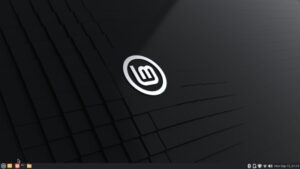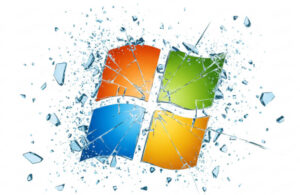FOSS Week in Review
 It inspires awe how quickly Friday comes along — one minute I’m talking stories for publication with my colleagues Ken Starks and Christine Hall, and the next thing I know, deadlines are poking me in the shoulder and saying, “Well…?”
It inspires awe how quickly Friday comes along — one minute I’m talking stories for publication with my colleagues Ken Starks and Christine Hall, and the next thing I know, deadlines are poking me in the shoulder and saying, “Well…?”
So while I am reminded by my astute daughter that pirates, too, would also prefer to program in C because, well, that’s where they sail (thank you, Mimi), let’s take a look at the week in FOSS.
antiX holds the systemd: Softpedia is reporting that direct from beautiful downtown Thessaloniki, Greece, the team at antiX has released antiX 15, a distro based on Debian 8 “Jessie,” and for those suffering from systemd intolerance, antiX seems to have beaten Devuan to the punch with a systemd-free release. According to the article, Killah P (the release name) “does not include the systemd init system, nor the systemd-shim package.” For those of you wanting to do a few laps with the new release, go ahead and pick it up, and my hat is off to anticapitalista and the others who put out this quality distro release after release.
Ubuntu gets on the stick: Meanwhile, Sean Michael Kerner reported yesterday on IT Business Edge that Ubuntu has earned its way onto Intel’s Compute Stick platform. The Compute Stick, a small form factor powered by a quad-core Atom processor with a USB port and a micro-SD card slot, can be plugged into any HDMI TV and — voila! — you have yourself a computing device. Once the sole domain of Windows 8.1, the Intel Compute Stick will use the year-old Ubuntu 14.04 LTS distribution.
But — and you knew there was going to be a big “but” — ZDNet is reporting that the Compute Stick with Ubuntu is only getting “half the memory and one-quarter the storage of the Windows stick.” According to ZDNet, “[t]he specs put the 1GB Ubuntu stick above the minimum requirements for the operating system, yet there is disagreement over whether a 1GB machine can run the desktop edition of Ubuntu smoothly. Even the official guidance for desktop edition recommends 2GB of memory ‘to properly run a day to day Ubuntu’.”
So it begs the question: Is Intel offering a level playing field in the Compute Stick arena?
Pick the best of Cascadia: Deb Nicholson, writing for opensource.com, reports that the folks at the Seattle GNU/Linux conference — SeaGL — are looking to bestow honor where honor is due: namely to a Free/Open Source contributor in the Pacific Northwest.
“As the Seattle GNU/Linux conference enters its third year, we decided we could do more to highlight the amazing community in Cascadia (a region on the west coast of North America that includes Washington, Oregon, British Columbia, and Idaho),” Nicholson writes. “This area, especially in Washington, may seem like a haven for proprietary software, but when you take a closer look, you realize people are doing the hard work of helping friends, colleagues, and students embrace free software everywhere.”
So nominations for those FOSS contributors in the Pacific Northwest can be made by sending an email to award@seagl.org with the nominee’s name in the subject line and information about the nominee’s work, affiliations, and history with free and open source software. For more information, visit the SeaGL page.
While I go ahead and draft my nomination for the Northwesterner I think is deserving, I’ll wish you all a happy Fourth and see you Wednesday.
Help keep FOSS Force strong. If you like this article, become a subscriber.















Ubuntu on Intel Compute Stick–it’s difficult to believe there is a good reason for limiting the resources and easier to believe they don’t want to annoy the 800 lb. gorilla. Or maybe that not annoying the gorilla is a good reason for Intel.
Where’s my tinfoil hat? I’m outa uniform!
No tinfoil hat needed, Uncle Ed. This issue actually raises more questions than it answers. The “official” explanation, which I think is in one of the articles linked, has a Canonical mouthpiece saying that Ubuntu doesn’t need the same memory requirements which, arguably, is nonsense.
So let’s put the ball in Canonical’s court: Why would you agree to hamstring Ubuntu with a lower memory offering on this stick when Microsoft is getting more? And is 1GB of RAM really — really — OK for Ubuntu 14.04? Spoiler alert: Not really, no, and I challenge anyone to run later versions normally on 1GB of RAM.
While we’re at it, let’s go way out on that limb and assume that our friends in Redmond mandate that the memory requirements be different, or higher, for Windows. How does that reflect its new found “love” for Linux and FOSS? Spoiler alert: It doesn’t, obviously, and they can’t say they’re OK with FOSS on one hand and — if this is truly the case here — limit its equal footing on hardware on the other hand.
Further, while Phoronix was able to hack the Windows version to get Ubuntu on a stick with higher RAM (wireless problems and resolutions aside), the fact remains that Intel in this case is treating Ubuntu as a second-class citizen.
Perhaps Intel wants the linux stick to give the same performance as the windows stick?
I dunno why, but it seems ot me that MS and Open Source just aren’t ever going to play nice with each other…LoL!
The Linux stick will still outperform the Windows one even with half the RAM and one quarter the storage.
The discrimination against our community is evident, fortunately we can express our concerns in the following link http://www.intel.com/p/en_US/support/highlights/bandk/stck1a8lfc, there’s a feedback section in the lower left corner, but remember we must voice our opinions in an educated manner so we create a positive feedback and maybe they’ll change the product specifications.
@stinky bridge troll
It’s clear how this happeed: There’s money changing hands behind the scenes. Microsoft doesn’t want Linux on an even footing.
Better than trying to persuade Intel through feedback – trying to compete with Microsoft kickbacks – it’s better to support products that aren’t afraid to put Linux first, like the Raspberry Pi and others. They’re cheaper and we already know Microsoft fears them because of the sudden and desperate attempt to get Windows 10 onto the Raspberry Pi 2.
Linux on a Pi gives me flexibility Windows can’t even dream of coming close to. I have several original Pi’s (which Windows won’t even run on), doing things such as acting as a media center, a 3d printer controller, and full blown desktop among other uses. The Pi 2 is even more powerful and can be up and running Linux in minutes.
On the other hand, Windows on the Pi 2 is a joke. It can only be installed and controlled from a separate Windows 10 desktop and has no capability to run a GUI – you heard that right: Windows 10 will not run on a Pi 2 except as a behind the scenes framework for custom Windows 10 ‘apps’ and takes a number of reboots and ‘setup’ phases to install.
Just…really…really…pathetic.